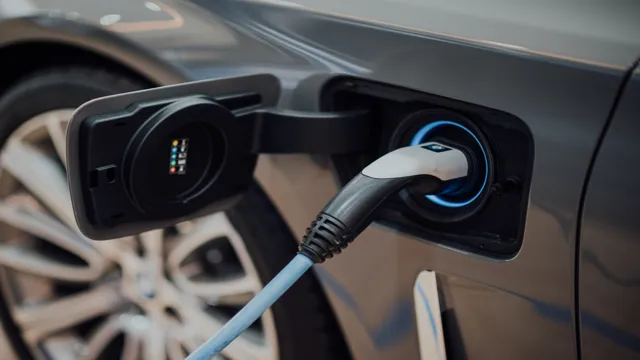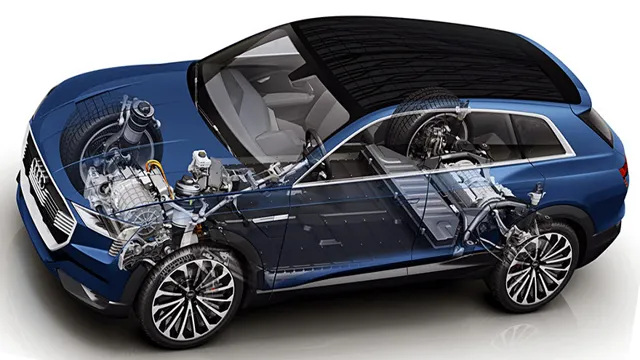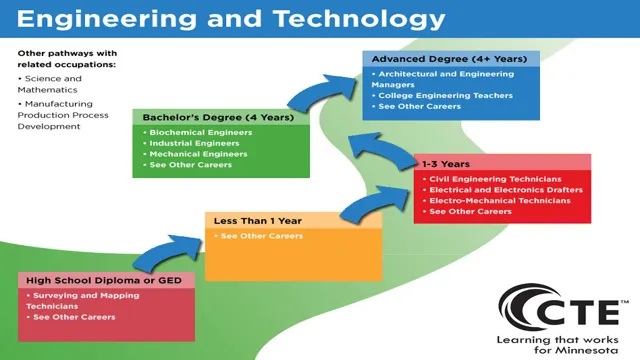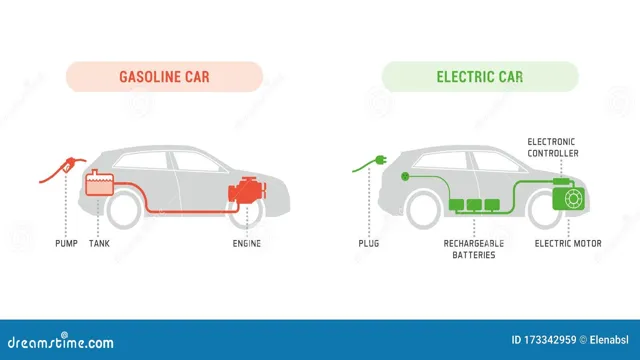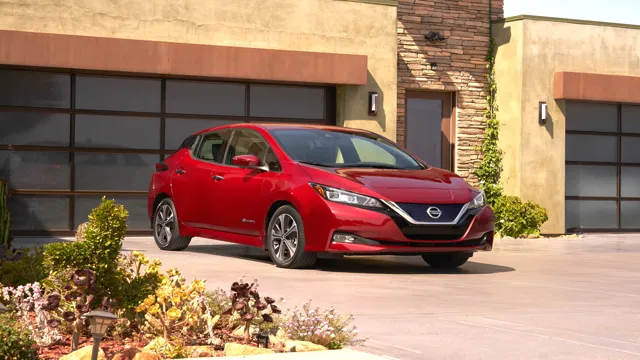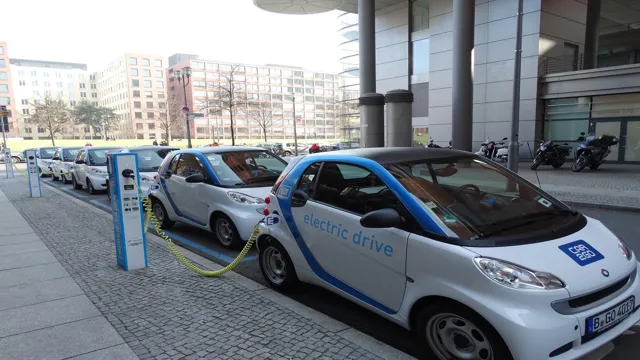Revolutionizing the Road: The Game-Changing Technological Advances that Are Making Electric Cars Mainstream Today
From phones and laptops to automobiles and streetlights, electricity is the power source behind almost everything we use today. But as technology advances, so does our need for cleaner and more efficient sources of energy. That’s where electrifying advances come in.
Thanks to the latest innovations in renewable energy, we can now harness the power of the sun, wind, and waves to generate electricity without harming the planet. Solar panels and wind turbines are becoming cheaper and more widespread each year, and small-scale hydroelectric and tidal power systems are also gaining traction. But it’s not just about generating electricity.
Advances in battery technology mean we can now store that energy efficiently, meaning we can power our homes and vehicles with renewable energy even when the sun isn’t shining or the wind isn’t blowing. And with the rise of electric cars and trucks, we’re seeing a push toward electrifying transportation, which could drastically reduce our reliance on fossil fuels. As we continue to make progress in electrifying our world, we’ll see lower greenhouse gas emissions, reduced air pollution, and greater energy independence.
And as renewable energy becomes increasingly affordable and accessible, we’ll also see economic benefits for consumers and businesses alike. So whether it’s through solar panels on your home, a wind turbine in your community, or an electric car in your garage, electrifying advances are changing the way we think about power and energy. And with continued innovation, the sky’s the limit for what we can achieve.
Battery Technology
Without a doubt, the rapidly evolving battery technology has played a paramount role in making electric cars more realistic today. With advancements in battery chemistry, electric vehicles can now go further on a single charge than before, making them more practical for daily use. Lithium-ion batteries, for instance, have a higher energy density, which means they can store more energy in the same amount of space.
Additionally, they’re more efficient, lighter, and have a longer lifespan than most other types of batteries. Besides, manufacturers are starting to use nickel-cobalt-aluminum (NCA) and nickel-manganese-cobalt (NMC) battery types for electric cars, which can deliver better range, lower costs, and faster charging times. Additionally, there have been great strides in the development of charging infrastructure, enabling electric vehicle owners to access fast-charging stations nationwide.
These technology advancements have made electric cars a viable alternative to gasoline-powered cars and will play a pivotal role in the transition to a low-carbon transportation system.
Longer Range on a Single Charge
When it comes to longer range on a single charge, battery technology plays a crucial role. Electric vehicle manufacturers are always on the lookout for better battery solutions, ones that can provide increased range without compromising on safety or durability. In recent years, we have seen significant advancements in battery technology, including the use of solid-state batteries and lithium-sulfur batteries.
These batteries offer several benefits over traditional lithium-ion batteries, including higher energy density and faster charging times. But despite these advancements, EV manufacturers are still struggling to find a battery that can provide a range of more than 400-500 kilometers on a single charge. However, with ongoing research and development in battery technology, we can expect to see even better and more efficient batteries in the future, making electric vehicles increasingly practical and convenient for everyday use.
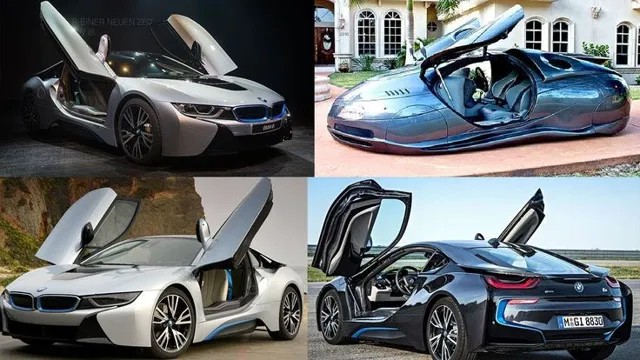
Fast Charging Capabilities
When it comes to our smart devices, one of the most important aspects of their performance is the battery life. However, with the fast-paced lifestyle that many of us lead, having a long battery life is not always enough. This is why fast charging capabilities have become increasingly important.
In terms of battery technology, this means implementing a system that can efficiently charge a device’s battery in a short amount of time without affecting its overall lifespan. These fast charging technologies use higher currents and voltages to charge the battery at a much faster rate than traditional charging methods. Although this approach may generate more heat, proper cooling mechanisms can be implemented to prevent any damage to the device.
At the forefront of fast charging technology are companies like Qualcomm, who have developed Quick Charge technology that can charge a device from 0 to 50% in just 20 minutes. As our reliance on smart devices continues to grow, fast charging capabilities will undoubtedly become an essential feature in our day-to-day lives.
Smart Car Technology
With the advancement of technology, electric cars have become more realistic and practical for daily use. Some of the technological advances that have contributed to this progress include better battery technology, increased availability of charging stations, and smart car technology. Smart car technology, in particular, has played a significant role in making electric cars more appealing to consumers.
Features such as regenerative braking, which allows the car to store the kinetic energy generated during braking and convert it into electrical energy, have helped improve the range of electric cars. Additionally, the use of sensors, cameras, and radar technology has improved safety by enabling features such as adaptive cruise control and lane departure warnings. Overall, the integration of smart car technology has made electric cars more efficient, convenient, and safer, making it easier for people to make the switch to a more sustainable mode of transportation.
Improved Navigation Systems
As technology continues to advance, we’re seeing an increase in smart car technology innovations. One area that is constantly being improved upon is navigation systems. With GPS and map integrations, drivers can now get real-time directions and traffic updates to help them reach their destination more efficiently.
Some cars even have voice assistants built in, allowing drivers to control their navigation system without ever having to take their hands off the wheel. This smart car technology isn’t just convenient, but it also helps to improve safety on the road by reducing distractions. With natural language processing and machine learning, these navigation systems are becoming more intuitive and personalized to each driver’s habits and preferences.
So whether you’re driving across town or on a road trip, smart car technology is there to guide you every step of the way.
Increased Safety Features
Smart car technology has introduced a range of increased safety features that are designed to protect drivers and passengers. With features such as collision avoidance systems, lane departure warnings, and adaptive cruise control, smart cars are equipped to identify potential hazards and respond quickly to prevent accidents. These features make driving much safer, reducing the risk of accidents and reducing the impact of collisions.
They can also help to reduce the severity of accidents, giving drivers and passengers a better chance of avoiding injury or even death. In short, smart car technology is making driving safer and more enjoyable than ever before.
Cost-Efficiency
In recent years, technological advancements have made electric cars a more realistic and viable option for drivers. One major factor that has contributed to this is increased cost-efficiency. Electric vehicle batteries have become more affordable, while their lifespan has also improved – meaning that they need to be replaced less frequently.
Additionally, advancements in battery technology have made it possible for electric cars to travel longer distances on a single charge. This means that drivers can now go further in an electric car without worrying about running out of battery power. Finally, improved charging infrastructure – including faster and more readily available charging stations – has made owning an electric car more practical for everyday use.
As a result, electric cars are becoming an increasingly attractive option for drivers looking for a greener, more sustainable mode of transportation – without sacrificing affordability or practicality.
Decreased Maintenance Costs
When it comes to maintaining a business, expenses can add up quickly. However, one way to decrease these costs is by investing in technology and equipment that requires less maintenance and repairs. By doing so, not only will you save money on regular upkeep, but you’ll also avoid unexpected, costly breakdowns.
For example, opting for high-quality, durable machines and software that are designed to last longer can reduce the need for frequent replacements or upgrades. In addition, scheduling regular maintenance and inspections can catch small issues before they become major problems, saving you time and money in the long run. With cost-efficiency at the forefront of many businesses’ priorities, investing in equipment and technology that minimizes maintenance costs is a smart choice.
Increased Tax Credits and Incentives
Cost-Efficiency One of the keys to making renewable energy economically viable is increasing tax credits and incentives. This is because renewable energy sources such as wind and solar power are still more expensive to produce than traditional fossil fuels. By providing tax credits and other incentives, governments can help to level the playing field and make renewable energy more cost-efficient.
For example, tax credits can be offered to businesses that invest in renewable energy sources. This helps to offset the higher cost of producing renewable energy and can encourage more businesses to make the switch. Similarly, homeowners can receive tax credits for installing solar panels or other renewable energy systems in their homes.
In addition to tax credits, governments can also offer other incentives such as grants and subsidies. These can be used to fund research and development of new renewable energy technologies, which can ultimately lower the cost of production and make renewable energy even more cost-efficient. By increasing tax credits and incentives, governments can help to create a more level playing field and encourage more businesses and individuals to invest in renewable energy.
This can ultimately help to reduce our dependence on fossil fuels and create a more sustainable energy future for all of us.
Infrastructure
Electric cars have become more realistic than ever before thanks to technological advancements that have revolutionized the automotive industry. One of the most significant developments is the infrastructure required for electric cars to be more practical for everyday use. Today, there are more charging stations available in public areas such as shopping centers, workspaces, and rest stations, which makes it easier for electric car owners to charge their vehicles and eliminates the range anxiety that comes with electric cars.
Besides, the development of high-capacity batteries has made electric cars more durable and able to go longer distances without needing a recharge. The batteries are not only lighter and smaller, but they are also more efficient in terms of power consumption. With these improvements in the infrastructure and technology used in electric cars, it’s no surprise that they are becoming more and more popular as a viable option for transportation.
Growing Number of Charging Stations
As EVs become more popular, the need for charging stations increases. Luckily, there has been a growing number of charging stations popping up all over the place. This charging infrastructure, though still in its nascent stages, has seen rapid expansion in recent years.
More and more businesses have started installing charging stations in their parking lots, and governments have started to implement policies to encourage their development. As a result, electric vehicle owners can now travel longer distances without worrying about running out of battery. However, the infrastructure for EV charging still has a long way to go.
While cities and towns are getting better at installing more charging points, there are still long stretches of road in between them with no charging facilities. EV charging infrastructure is a marathon, and not a sprint. The more people that purchase EVs, the more demand there will be for charging stations, and the faster we will see improvements in infrastructure.
Conclusion
Thanks to technological advances, electric cars are no longer science fiction, but a realistic option for environmentally-conscious drivers. From improved battery technology and charging infrastructure to AI-assisted driving and autonomous features, electric cars have never been more efficient or convenient. And as the trend toward sustainable energy continues, it’s clear that the electric vehicle revolution is here to stay.
“
FAQs
What are the major technological advancements that have made electric cars more practical for daily use?
The development of more efficient batteries, faster charging capabilities, and improved electric motors have made electric cars more realistic for everyday use.
How has the rise of autonomous driving technology impacted the practicality of electric cars?
The advancements in autonomous driving technology have made electric cars more practical by reducing the need for human intervention and allowing for more efficient energy usage.
What is the current state of electric car infrastructure, and how does it affect the practicality of electric cars?
The availability of charging stations is a major factor in the practicality of electric cars, but the infrastructure for these stations is rapidly expanding, making electric cars more realistic.
What future technologies are being developed to make electric cars even more practical?
Researchers are exploring the potential of wireless charging, longer-lasting batteries, and the use of solar panels to help make electric cars even more practical and accessible in the future.
